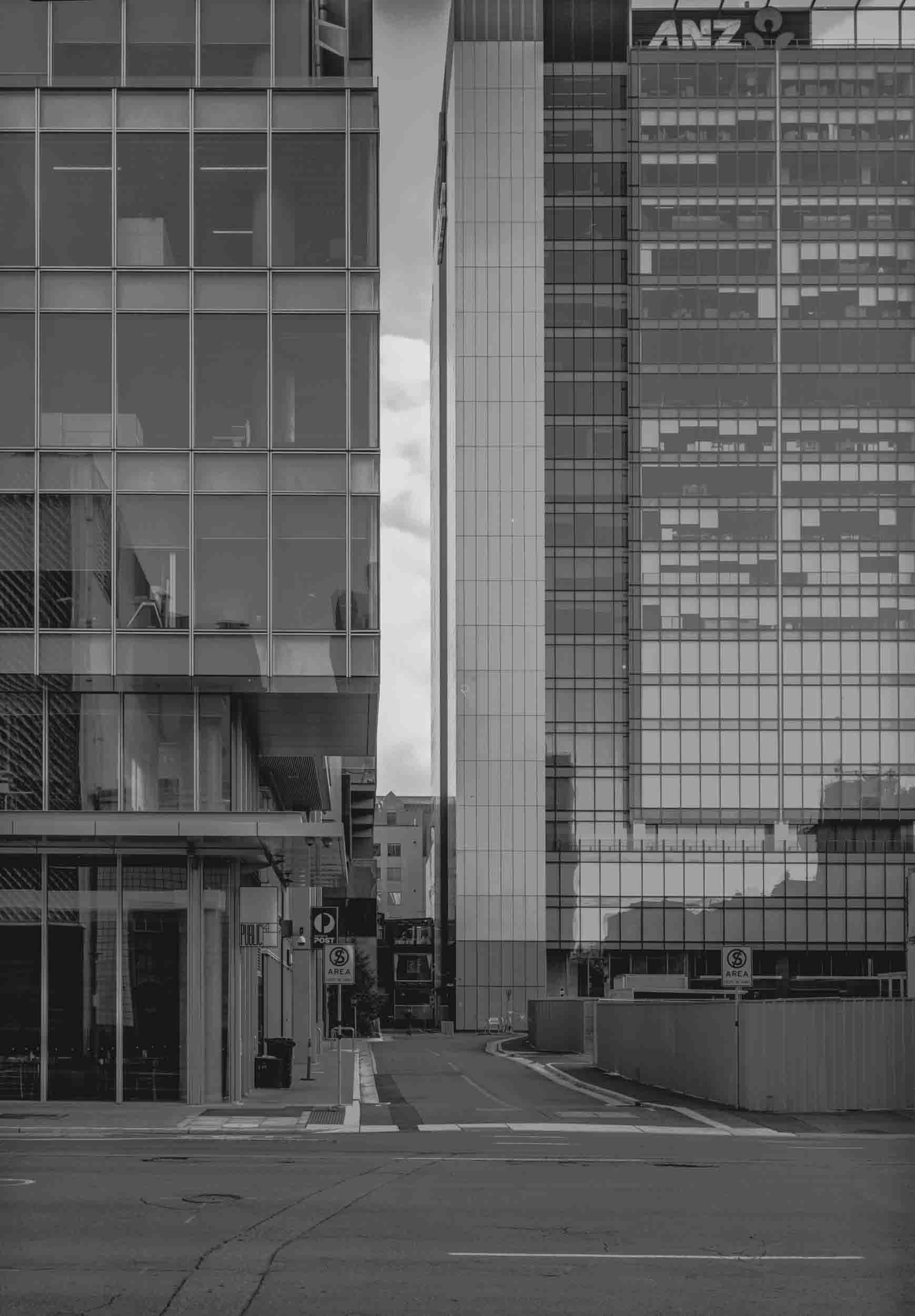Photography and time
Photography's capacity to freeze and preserve time has been seen as one of its central characteristics. On this account photography consists of a tracing of time through the exposure time of the photo, which in conjunction with light, determines the resulting image. Photography's ability to stop time is seen as a key to understanding photography. This characteristic is often interpreted as ‘the decisive moment’ of 35mm hand held snapshot photography. This is the aesthetic legacy of photography..
Yet Adelaide’s CBD is constantly changing as it is in transition from an industrial city of the mid twentieth century to a post-industrial one the early 21st century. A problem emerges for photography: is it able to represent time in the form of change? . Traditionally, as opposed to cinema, photographs are static. As opposed to painting, which is characterized by a certain opacity, photographs are transparent representations of reality. How can photography – a traditionally static transparent medium – tackle issues around time?
Franklin St, Adelaide CBD
The view of photography as freezing time is a standard one. It is held by Peter Wollen, who begins his essay 'Fire and Ice' by asserting that the 'discussion of photography is dominated by the concept of time. Photographs appear as devices for stopping time and preserving fragments of the past, like flies in amber'. André Bazin's characterisation of photography in 'The Ontology of the Photographic Image' is similar in its emphasis on the medium's capacity to preserve the past 'enshrouded as it were in an instant, as the bodies of insects are preserved intact, out of the distant past, in amber'. Photography can only provide a tracing of the“state of things” rather than a becoming.
For Bazin photography comprised 'instantaneity' and was compelled to 'capture time only piecemeal' in contrast to the durational capacity of cinema. In the comparative analysis with cinema and photography the latter is invariably found to be lacking with respect to representing time. Cinema and photography are conventionally explained in terms of the binary organization that sees them as representing mobility and immobility, life and death." The end logic of connecting the photograph to the lost moment, or centring photography to the memorialising function of the photograph, is to equate the photograph with death.
Could the long exposure of large format photography enable photography to shift away from the instantaneous image one of the 35mm cliched snapshot style to represent time as duration? The large format form of photography is counter to the snapshot and so it could disrupt the hackneyed or stock representations of traditional documentary photography and so destabilize predictable stories or narratives.
Bent St, Adelaide CBD
It is plausible to hold that the long exposure in extending the time of the photograph also represents that time in its image since the long exposure photograph depicts the entire duration that unfolds before it.
After all, the long exposure photograph represents the entire duration that unfolds before the open shutter of the lens. The long exposure for the above Franklin St architectural photo was made with a large format camera( 5x7 monorail largely ) early on a Sunday morning when the city was empty of cars and people. However, if it was made during 9-5pm on a weekday it would produce a series of moments in a single frame. During this long exposure the clouds would have moved, as would the people in the offices and the various reflections in the office windows. This would suggest that the standard long exposures of large format photography in tracing a continuity of movement within a single frame has the potential to transcend the instantaneous snapshot and produce a durational time exposure.
It becomes a time-image that could give a powerful sensation of time passing — time as a constant state of flux.
Notes
Peter Wollen, 'Fire and Ice', in The Photography Reader, ed. by Liz Wells (London: Routledge, 2003), pp. 76-80 (p. 76).
André Bazin, 'The Ontology of the Photographic Image', in What is Cinema? (Berkely: University of California Press, 1967), p. 14.


